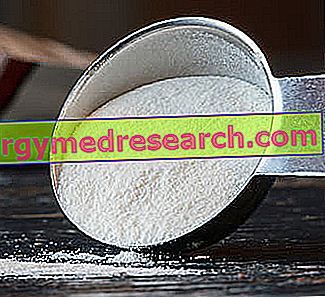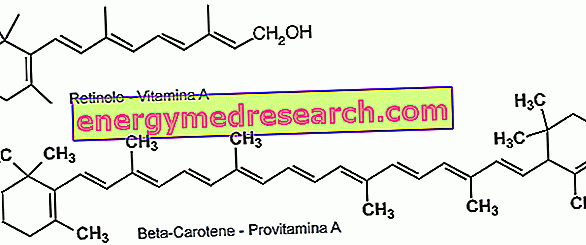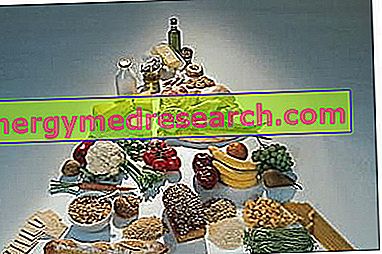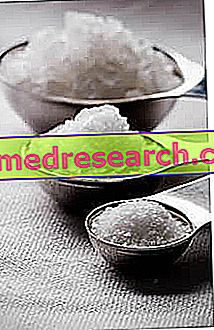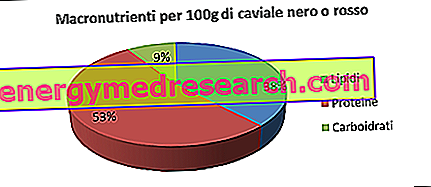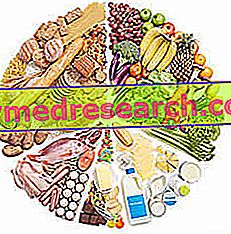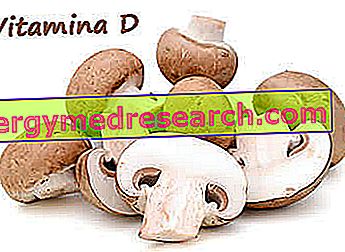Generality What is Xanthan or Xanthan Gum? Xanthan or xanthan gum is a complex carbohydrate, a polysaccharide with a high molecular weight obtained by bacterial fermentation of a simple carbon hydrate, such as glucose or sucrose. Production of Xanthan To produce xanthan gum, natural strains of Xanthomonas campestris are used , hence its name
Category nutrition
What are Provitamins are semi-essential nutritional molecules very similar to vitamins; in fact, the root shows that these are isomers, dimers or precursors of specific essential vitamins; the conversion of provitamins into vitamins takes place thanks to some enzymatic reactions of the organism. Provitamin A A classic example of provitamine is given by the numerous chemical variants of retinol (vit A); today we know about ten types, but the most common are: Carotenoids: contained in green and yellow vegetables Retinol esters: contained in foods of animal origin All retinol esters are liposolubl
Introduction to Vitamins Vitamins are essential molecules in small quantities, both for the life of animals and for that of plants; they do not supply energy but perform functions of primary importance: Development of the growing organism Bioregulating function Coenzyme precursors or constituents Vitamins can be classified according to their chemical and physical characteristics; the most traditional differentiation is that of solubility (water-soluble vitamins and fat-soluble vitamins), but there are also distinctions on the molecular resistance to heat (thermolabile vitamins and thermostable
Sodium chloride Sodium chloride is the chemical name of the most commonly known "table salt"; it is the sodium salt of hydrochloric acid, which is crystalline and colorless at sight, characterized by its typical color and taste. The table salt is a flavor enhancer, that is it favors (or should favor) the palatability of the prepared foods
What is Silicon Silicon (Si) is a mineral, similar to carbon, whose functions and characteristics represent a fairly recent discovery. Functions in the body The scientific evidence of some study groups has brought to light the fundamental importance of silicon in the formation of mucopolysaccharides constituting collagen, a structural protein which is widespread in bones, articular cartilage and connective tissues
Sodium Sodium (as opposed to potassium) is the main EXTRAcellular cation. It is found in the body in quantities of about 92 grams, of which: 50% is located in the extracellular interstices about 12.5% in intracellular fluids about 37.5% inside the skeleton Sodium performs different tasks; among these, the main ones are undoubtedly the regulation of the volume and oncotic pressure of the extracellular fluid; in addition, it participates in maintaining the acid-base balance. Th
Generality Threonine (T or THR) is an amino acid, or one of the monomers that make up proteins; it is also a quaternary compound, as structured by four elements: carbon, hydrogen, oxygen and nitrogen. Its brute formula is C 4 H 9 NO 3 and has a molecular weight of 119.12u (or Dalton). To be precise, threonine (L-threonine) is one of the 20 ordinary amino acids and, since the human organism is not able to synthesize it autonomously in sufficient quantities to meet needs, it is included in the list of essential amino acids, both for the adult and for the child
Obviously, fish eggs are NOT all the same and their nutritional characteristics depend mainly on the fish species and the type of processing (if any) they have undergone (eg salting, smoking etc.). Before looking in more detail at some nutritional values of fish eggs (not all, as there are few data available as it is quantitatively MARGINALI food if contextualised in the collective feeding), we remember that it is, like bird eggs, female gametes intended for reproduction; this means that ALL the category of fish eggs brings significant amounts of lipids, also essential but not without cholest
Definition The biological value (VB) is a parameter of evaluation of the plastic proteins introduced into the body with food. This index, which is expressed with a numerical value, refers to the quantity, quality and reciprocal relationship of the essential amino acids present in food peptides. Ultimately, the biological value is a nutritional aspect that describes the "protein quality and the plastic potential of the amino acids contained in foods"
Vitamin H, better known as Biotin , sometimes referred to as vitamin B7 , is a water-soluble vitamin of the B complex. Functions The functions of vitamin H are of the coenzymatic- carboxylase type, enzymes belonging to the category of lyases that fix a CO 2 molecule and subsequently transfer it into the carboxylate one; in particular, vitamin H is the coenzyme of 4 very important carboxylases: Pyruvate carboxylase → gluconeogenesis Propionyl CoA carboxylase → propionate metabolism Methylcrotonyl CoA → metabolism of branched amino acids Acetyl CoA carboxylase → fatty acid synthesis. Feeder
Vitamin D Vitamin D is an essential molecule for the body. It is considered a pro-hormone, and performs various metabolic functions: Increased bone mineralization. Increased renal calcium reabsorption. Increased intestinal phosphorus absorption. Support of the immune system. Differentiation of some cell lines

